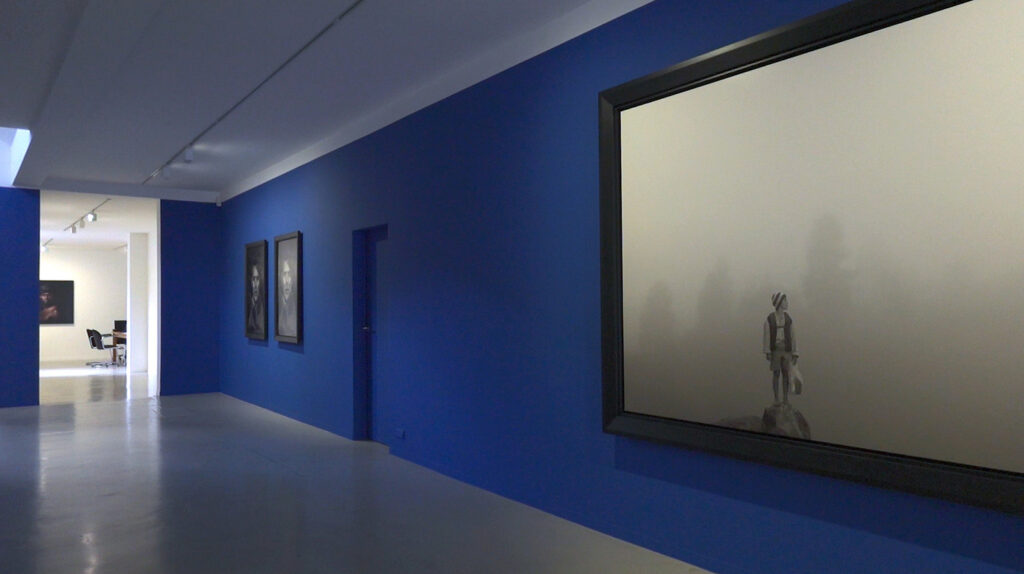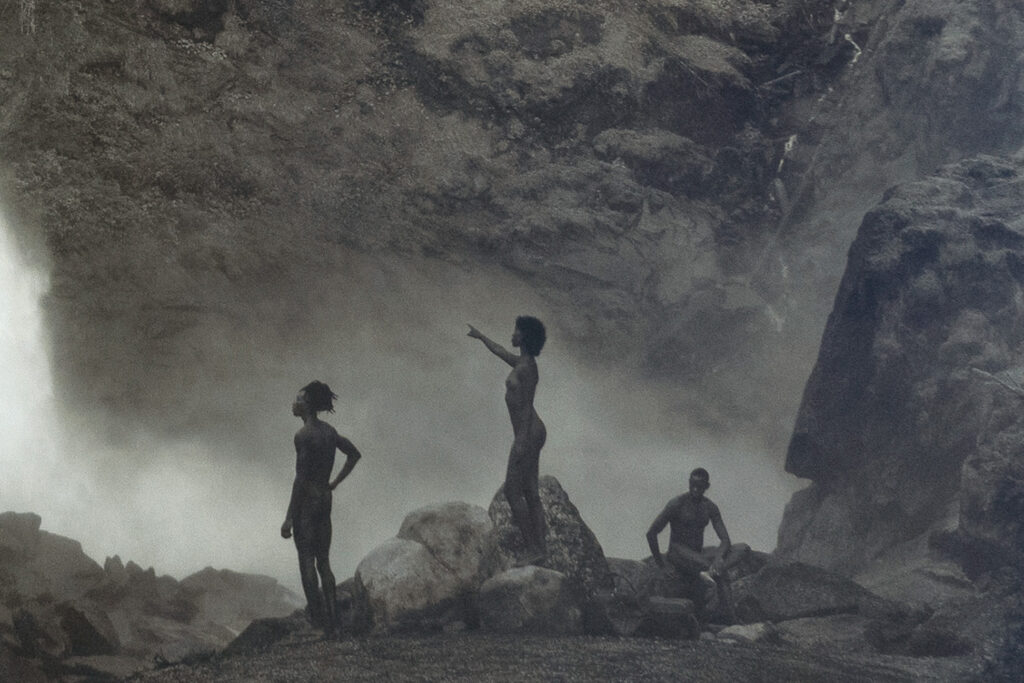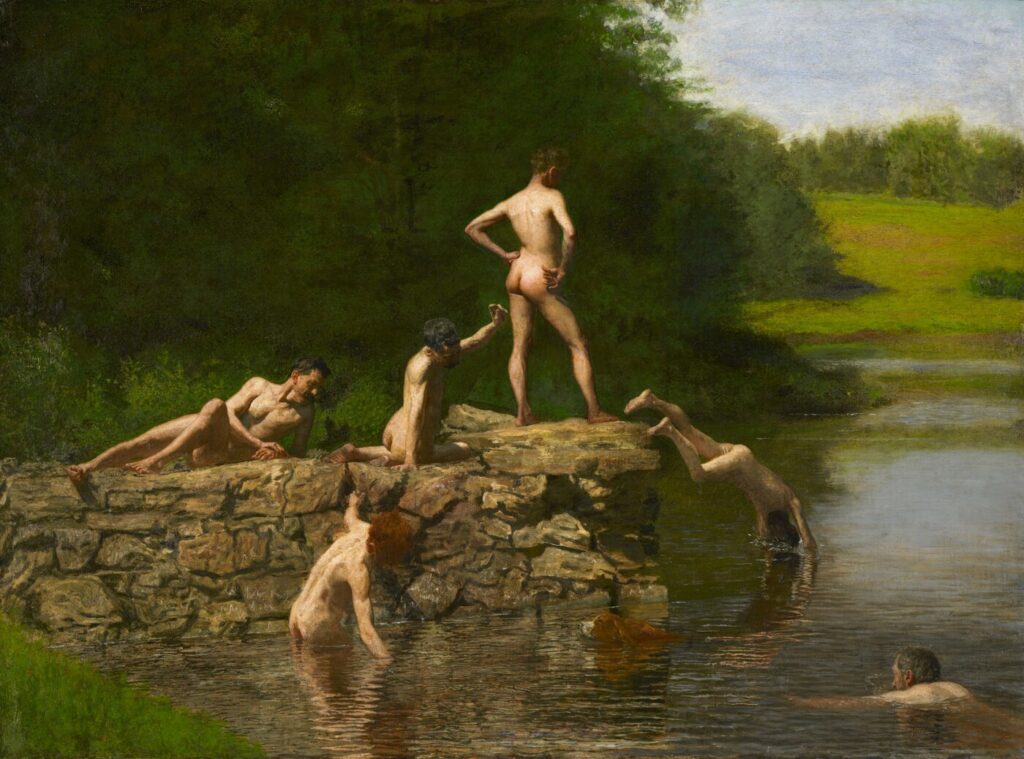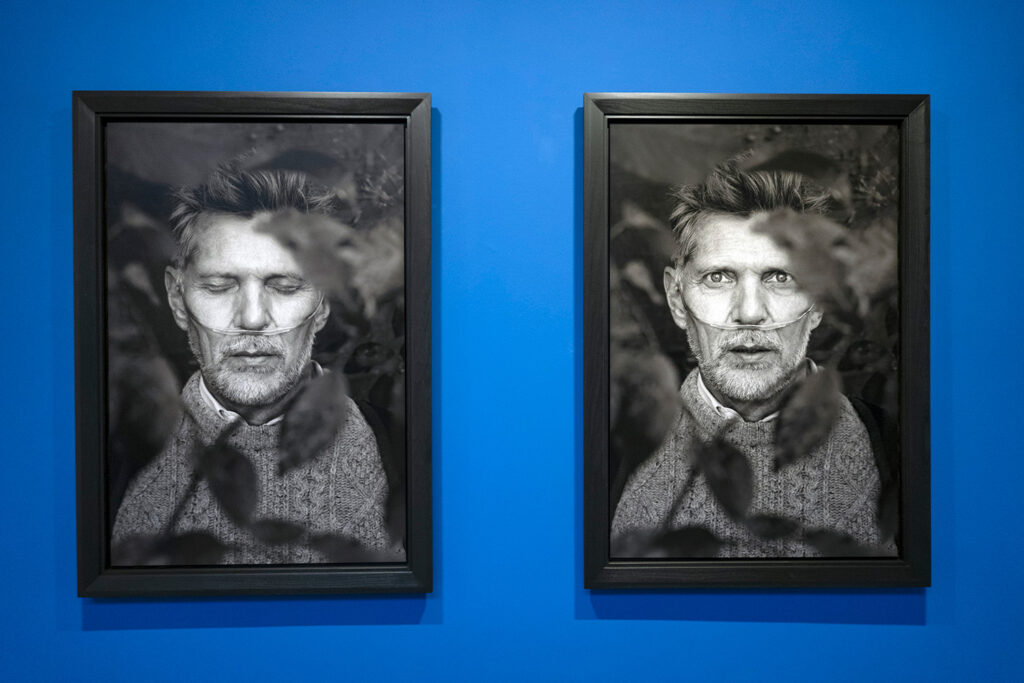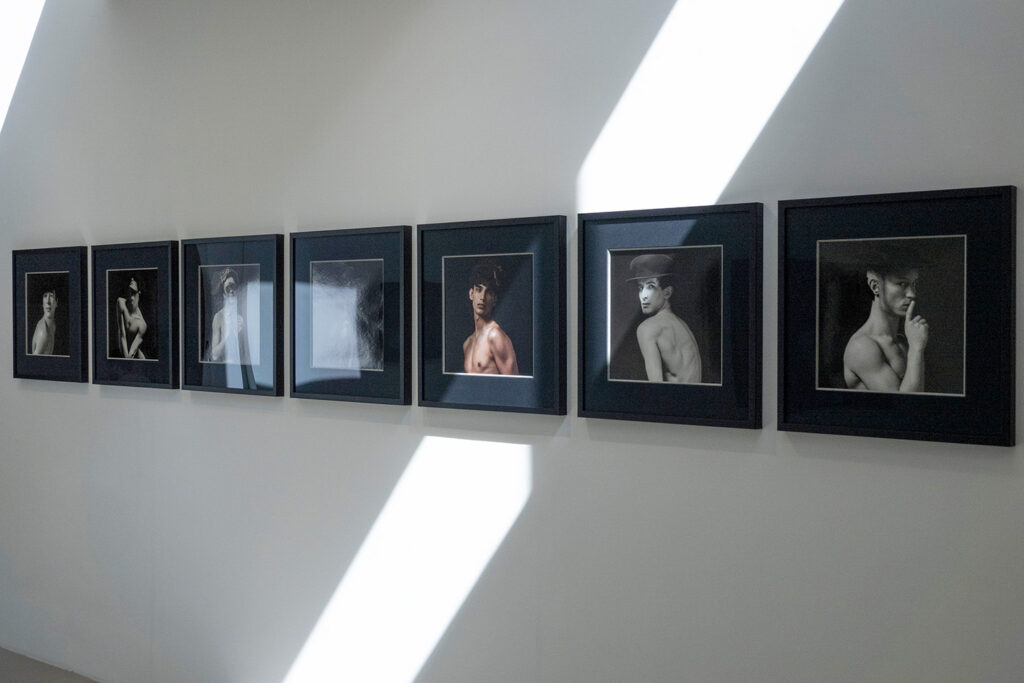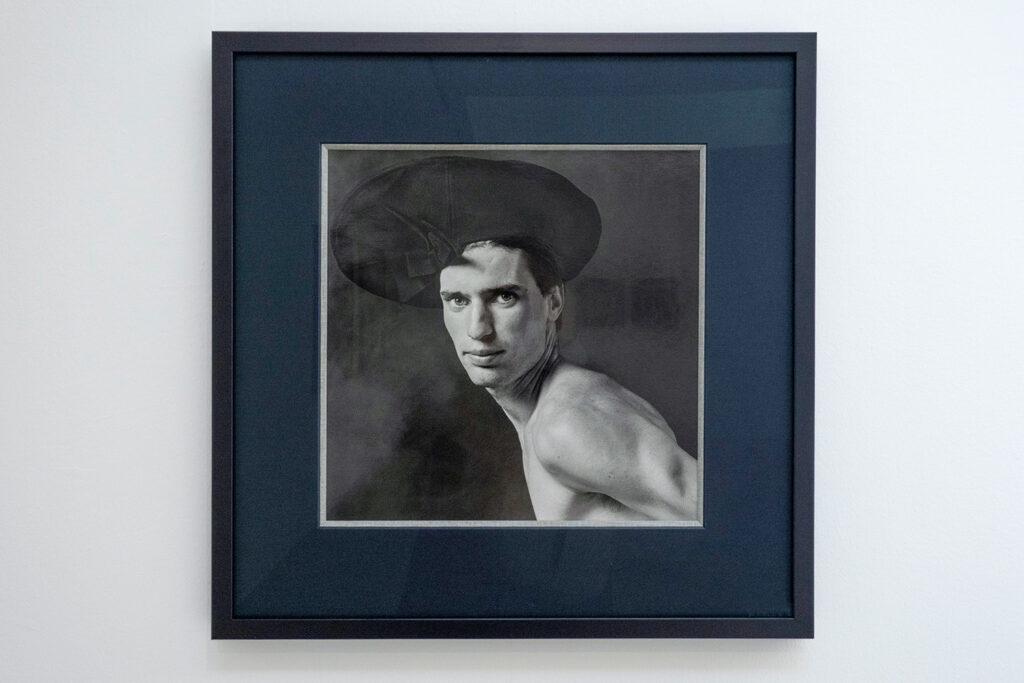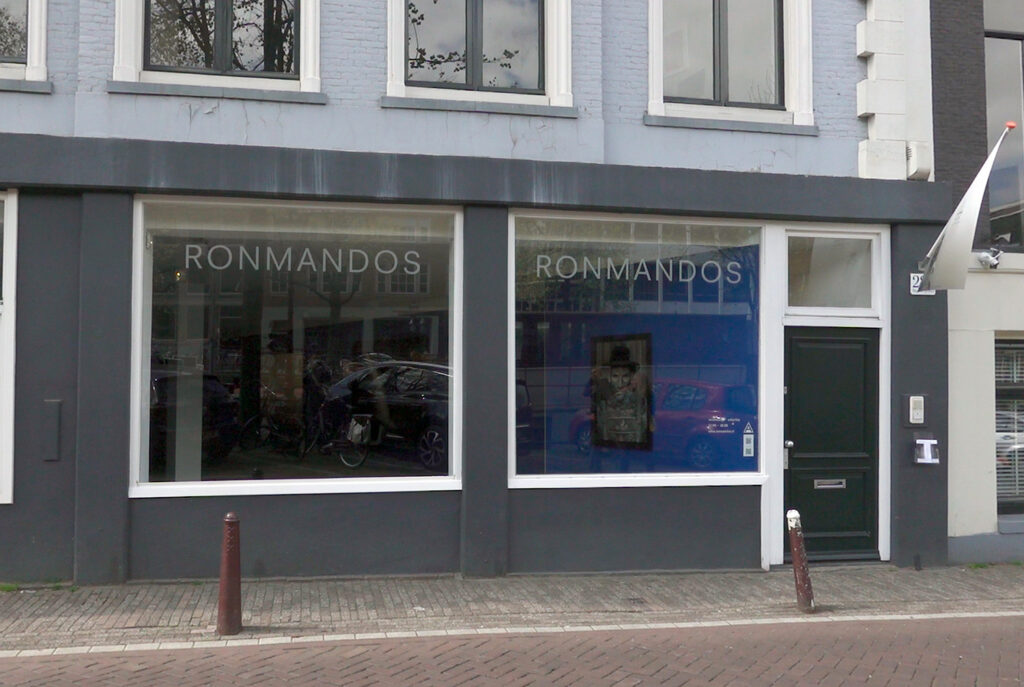In the Netherlands, where I live, the lockdown has been in effect for over fourth months—from last December until today. Large-scale facilities, including art museums, remain closed. Thus, due to the overwhelming lack of opportunities to appreciate art, this series has been on hiatus for a brief period. This month, however, restrictions are gradually being relaxed, and at least for galleries, admission is now (as of April 23, 2021) possible under the following conditions: One must make a reservation four hours in advance, and the number of people who may enter within each time slot is limited.
Thus, this was my first gallery visit in four months. I chose to start with the latest solo exhibition of Erwin Olaf (1959-), an acclaimed Dutch photographer.
The Canal Ring Area of Amsterdam is known as a World Heritage Site. Walking along the canals, where the old 17th-century brick buildings still stand, it’s easy to forget what year it is. On the outskirts of the district is the gallery space Galerie Ron Mandos, which is filled with the work of Dutch photographer Erwin Olaf.
This exhibition focuses on the staged portraits that have become Olaf’s specialty, but has also been expanded to create a grand exhibition. From front to back, the three series, Im Wald, Ladies Hats, and April Fool 2020 are displayed in the vertical space characteristic of buildings in Amsterdam.
In this article, I’d like to talk about Im Wald and Ladies Hats.
Olaf’s first-ever outdoor photography series
The blue wall, which impressively envelops the space from the entrance to the back of the gallery, is decorated with the magnificent series Olaf shot in 2020, Im Wald. Known for his indoor portraits, this is Olaf’s first time using the great outdoors as the setting for his photographs.
Over two meters in length, the large prints of the natural landscape are overwhelming, but upon closer inspection, I notice that in every image, there are small people in frame. This series focuses on contemporary global issues, including climate change and the coronavirus pandemic, and it emphasizes just how microscopic mankind really is.
In late 2019, Olaf visited Germany for his large-scale solo exhibition, which is currently on display at the Munich museum Kunsthalle München. There, he happened to join a wilderness tour led by some forest rangers, visiting the Ammergau Alps which are located on the border between Germany and Austria. In Olaf’s home country of the Netherlands, which is a “low country” as its name suggests, a quarter of the land has been reclaimed by people, meaning the opportunities to experience the magnificence of nature are few. Thus, his visit to the Alps seems to have made a deep impression on him.
“I thought, how insignificant we are.” He said in an interview with the Dutch newspaper, Volkskrant. “And at the same time I started to think: isn’t that tangle of seven billion people flying, fleeing, emigrating or holidaying all over the globe, isn’t that a bit perverse? The travels of man and our pride towards nature came together for me in that forest.(1)” After coming to this realization in nature, Olaf visited that forest again last summer while temporarily released from the lockdown, shooting the photographs for Im Wald over a ten-day period.
(1)Erwin Olaf ging het bos bij Beieren in en kwam terug met zijn somberste fotoserie ooit(de Volkskrant)
https://www.volkskrant.nl/cultuur-media/erwin-olaf-ging-het-bos-bij-beieren-in-en-kwam-terug-met-zijn-somberste-fotoserie-ooit~b801b3d8/?referrer=https%3A%2F%2Fronmandos.nl%2F
In a nearly two-meter photograph, “Am Wasserfall” (2020) captures a clearing in the forest where a large waterfall comes down a cliff. In the exhibition hall, it’s easy for one’s eyes to be drawn to the waterfall, but after looking at it for some time, We can notice three naked people standing in the lower right corner of the frame.
One can see that the people and the waterfall are on a completely different scale. Two of the people look at the waterfall in awe, but the waterfall shows such immense power that it can be interpreted as indifferent in return. The symbolic staging emphasizes the honest impact of Olaf’s own experience in the wilderness of the Ammergau Alps, allowing us, the viewers, to relive his experience.
A hybrid of tradition and innovation
Looking at the three people in “Am Wasserfall” makes me think of “The Swimming Hole” (1884-1885) by one of the leaders of modern art, painter Thomas Eakins (1844-1916).
Amon Carter Museum of American Art Collection
As a matter of fact, Olaf himself said that “Am Wasserfall” was inspired by this painting of six naked white men relaxing by a river deep enough to swim in, and the image of young people’s bodies blending into nature is a common thread in both images. Olaf was born in the Netherlands, which has produced many famous painters who have left their mark on history, such as Rembrandt, Vermeer, and Van Gogh. Through his many staged photographs, Olaf frequently pays homage to classic Western paintings. This trademark can be seen in this work, too.
However, in Olaf’s “Am Wasserfall,” the white people in the painting have been replaced by Black people. It’s also worth noting that while both images depict a person in the center posing in a way that implies they are a leader, in “Am Wasserfall,” the symbolic figure in the center of the screen is a woman. Olaf emulates the classics, but by incorporating the perspectives of the #MeToo movement and Black Lives Matter, he makes sure to update the details to fit the times.
In retrospect, Olaf was one of the first photographers to incorporate digital retouching through Photoshop in his portraits. The series Royal Blood (2000), which led to worldwide recognition, is a typical example of work that could not have been created without digital technology. It could be said that Olaf’s experimental approach of actively incorporating new techniques and ideas while still respecting tradition is the very strength of the Dutch people, who simultaneously pursue the classic and the contemporary.
Amid the coronavirus pandemic and nature, Olaf sees his future self
In addition to grand scenes from nature, the Im Wald series includes portraits of around fifteen people. The most impressive of these are two photographs of Olaf himself, with open and closed eyes.
Olaf will be 62 this year, but at the age of 36, he was diagnosed with emphysema and doctors pronounced that he would not live past 60. He was also told that if he contracted the coronavirus, he would most likely not survive. To shoot this series, he had to travel to a high altitude of 1,200 meters, requiring an oxygen tube to be installed in his nose to ease the strain on his lungs. These two photos were taken of him in that state. As he was enveloped by foliage in every direction, what was really on his mind?
Oddly, Olaf had predicted his future state over ten years ago. In 2009, as he turned 50, he took a series of three self-portraits. As the title, “Self Portrait – 50 Years Old: I Wish, I Am, I Will Be,(2)” suggests, the first photo is a digitally manipulated, ideal image of himself with youthful skin and muscles (I wish), the second is him in his natural state in 2009 (I am), and the third is a digitally manipulated photo where he has aged several decades (I will be). In the third photo, he has an oxygen tube in his nose. [The URL where you can view the work is below for reference.]
(2)Erwin Olaf’s “Self-Portrait 50 Years: I Wish, I Am, I Will Be” can be viewed on his
https://www.erwinolaf.com/art/I_wish_I_am_I_will_be_2009
Almost a decade later, he witnessed a future self he had once predicted, but in a way he had never imagined. After battling the disease for nearly a quarter of a century, he’d always been in danger of death, but the arrival of the coronavirus pandemic must have intensified that feeling for him. In that state, he stood before the camera, closing both eyes. One cannot help but feel his determination from this sight.
Playing with androgyny
Proceeding to the back of the gallery, the majestic blue walls are suddenly replaced by bright white walls, and a series of portraits typical of Olaf’s work appears. This mixed series, featuring black and white and color photographs, is titled Ladies Hats. It was inspired by the fact that although Western art strikingly depicted men wearing ornate hats up until the late 19thcentury, they became obsolete after that.
One can see the influence of paintings in the model’s poses and the lighting. While shooting “Hennie,” one of the first pictures in the series, Olaf referred to paintings from the Dutch Golden Age, especially those by Rembrandt. Using chiaroscuro, a technique characteristic of Rembrandt’s work that skillfully uses the contrast between light and dark, Olaf creates a mysterious portrait.
The hats, which are now seen by society as a feminine item, and the masculine body seem to be at odds with each other, but in fact, they achieve perfect harmony in this series. By having his subjects wear hats, their expressions are naturally softened, giving off a sense of intimacy. We see here the fun of androgyny, and how in fact, the evaluation criteria [of gender] fluctuates greatly depending on the values of each era. Thus, this work does an excellent job satirizing the patriarchal gender performativity within the norms of heterosexuality.
In addition, the gallery is also displaying April Fool 2020, a work composed of videos and photographs inspired by the current situation caused by the coronavirus pandemic. I can’t take my eyes off Olaf, who is still full of vigor even after his 60thbirthday.
Outside of Amsterdam, Erwin Olaf exhibitions are currently being held at Kunsthalle München in Munich, Germany, and Danysz Gallery in Shanghai, China.
■Erwin Olaf, Im Wald, at Galerie Ron Mandos (The Netherlands)
April 14th – May 22nd, 2021
https://ronmandos.nl/exhibition/erwin-olaf-im-wald/
■Erwin Olaf, UNHEIMLICH SCHÖN at Kunsthalle München (Germany)
May 14th – September 26th, 2021
https://www.kunsthalle-muc.de/ausstellungen/details/erwin-olaf/
■Erwin Olaf, Traveling Souls at Danysz Gallery(China)
April 27th – June 8th, 2021
https://danyszgallery.com/viewing-room/10-erwin-olaf-traveling-souls/
Photography Tomo Kosuga
Translation Aya Apton


